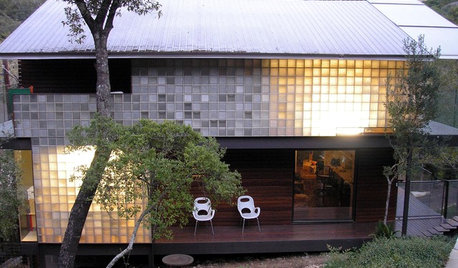I give up on growing stone fruit
bonsaist
14 years ago
Related Stories

EDIBLE GARDENSGrow Plum Hybrids for Your Favorite Fruit Flavors
Plums are cozying up with apricots, peaches and even cherries — here’s how to grow these hybrids for the best aspects of each
Full Story
FALL GARDENING5 Fall Fruits You Can Grow in Containers
Brighten your porch or patio with a potted pomegranate, kumquat, blueberry bush or another great fall fruit
Full Story
GARDENING GUIDESGreat Design Plant: Grow Blueberries for Their Fruit and More
Eastern gardeners should consider growing blueberry plants for their delicious fruits, bee-friendly spring blooms and brilliant fall foliage
Full Story
EDIBLE GARDENSHow to Grow 10 Favorite Fruit Trees at Home
Plant a mini orchard in fall, winter or early spring to enjoy fresh-off-the-tree fruit the following year
Full Story
REMODELING GUIDESGreat Material: Glass Block Grows Up
See how designers are using the humble glass block for privacy, pattern and light
Full Story
GREEN BUILDINGGreen Grows Up: The Many Faces of Today's LEED Homes
While LEED-certified homes have some common characteristics, the rest is up to your imagination
Full Story
BEFORE AND AFTERSMy Houzz: A 1950s Bungalow Grows Up and Greens Out
Beauty and energy efficiency go hand in hand in this expanded and renovated Massachusetts forest home
Full Story
FRUIT TREESHow to Grow Your Own Juicy Plums
Easier than other stone fruits and with a variety of colors to choose from, plums are a versatile garden addition
Full Story
EDIBLE GARDENSSummer Crops: How to Grow Tomatoes
Plant tomato seedlings in spring for one of the best tastes of summer, fresh from your backyard
Full Story
DECORATING GUIDES10 Ways to Give Your Hospitality a Tropical Touch
Treat guests to the resort treatment with blossoms, fruit and artwork that stir up an air of the exotic
Full StoryMore Discussions








olpea
bonsaistOriginal Author
Related Professionals
Maple Valley Landscape Architects & Landscape Designers · Norfolk Landscape Architects & Landscape Designers · Danbury Landscape Architects & Landscape Designers · Edmond Landscape Architects & Landscape Designers · Essex Landscape Architects & Landscape Designers · Glassmanor Landscape Architects & Landscape Designers · Manhattan Beach Landscape Architects & Landscape Designers · Brentwood Landscape Contractors · Brookline Landscape Contractors · Coeur d'Alene Landscape Contractors · Live Oak Landscape Contractors · Parkland Landscape Contractors · Tewksbury Landscape Contractors · Wailuku Landscape Contractors · Washington Landscape ContractorsScott F Smith
misterbaby
Michael
misterbaby
fruithack
alan haigh
Michael
misterbaby
alan haigh
misterbaby
sharppa
alan haigh
misterbaby
alan haigh
misterbaby
olpea
misterbaby
alan haigh
olpea
Beeone
alan haigh
olpea
alan haigh
olpea
alan haigh
olpea
alan haigh
olpea
olpea
bucky130
kellascat
lucky_p
alan haigh
bucky130
olpea
theaceofspades
alan haigh
Scott F Smith
theaceofspades
alan haigh
theaceofspades
alan haigh
misterbaby
theaceofspades
alan haigh
theaceofspades
alan haigh
eukofios